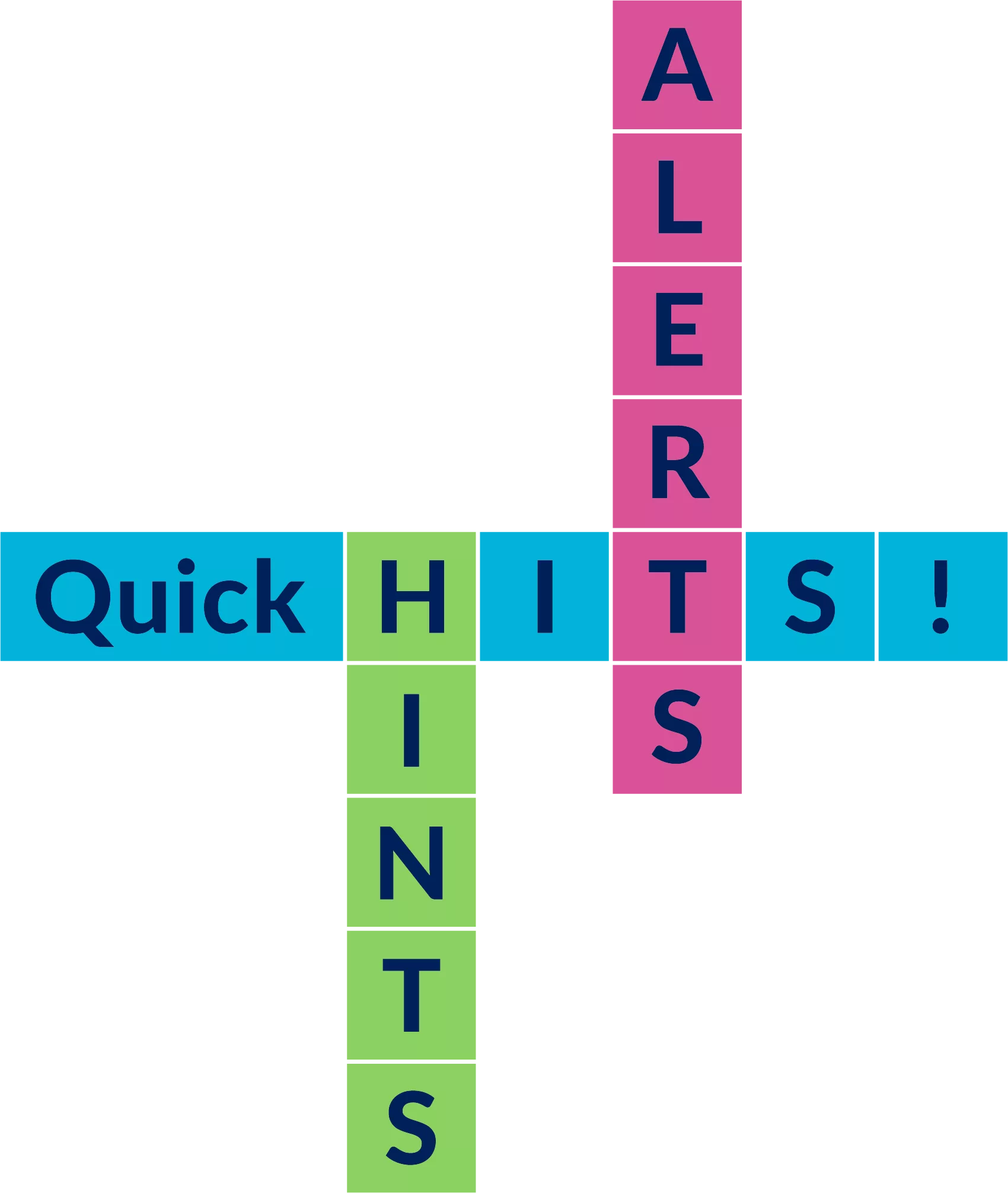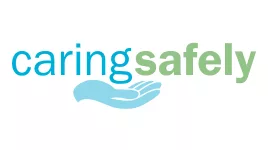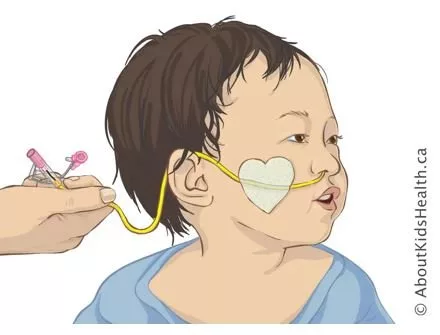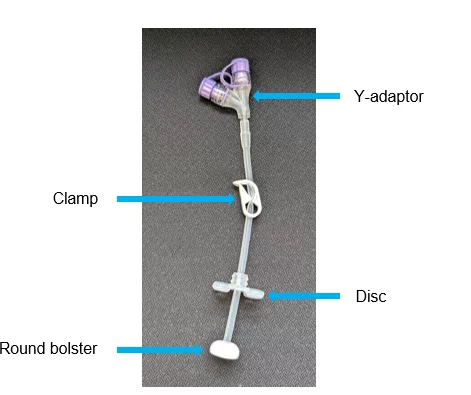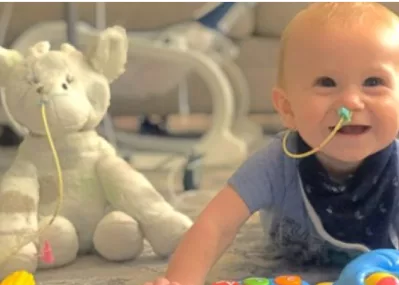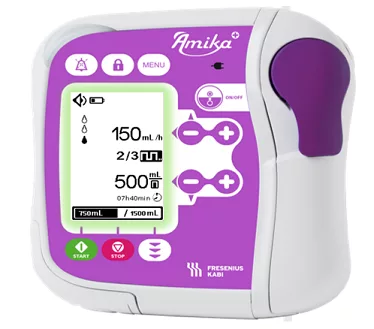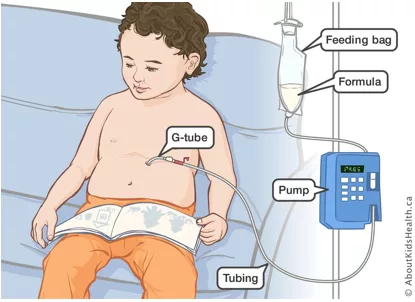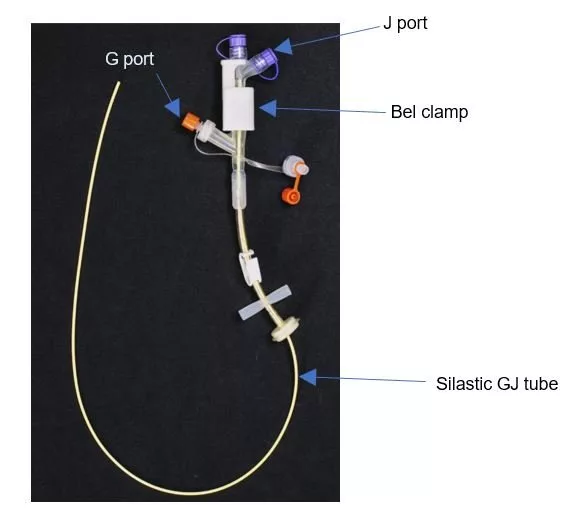SITUATION:
This QuickHit was informed by a question from several home care nurses about when and how to do routine checks of a child’s balloon style feeding tube.
BACKGROUND:
Gastrostomy (G) tubes, gastrojejunostomy (GJ) tubes and combination gastro/gastrojejunostomy (G/GJ tubes) are devices that provide liquid nutrition, medication and other fluids directly into the stomach and/or intestine. There are many types of these tubes, some are placed in Image Guided Therapy (IGT) and some are placed by General Surgeons. Some, but not all, of these tubes have a balloon on the end located inside the stomach, which when inflated with sterile or distilled water, keeps the tube in place and prevents it from falling out or accidently becoming dislodged.
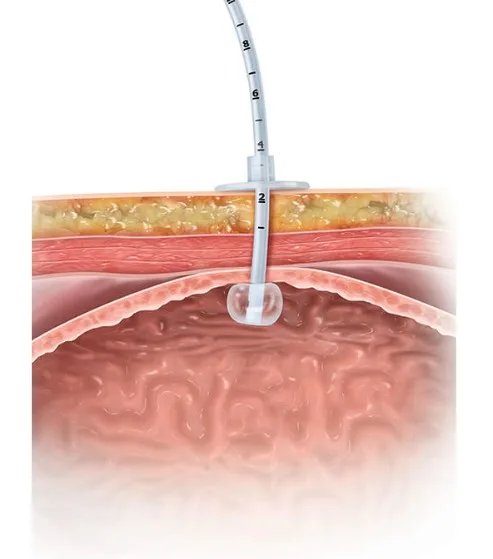
Any kind of indwelling medical device has the potential to break or degrade with use and over time. Balloon checks on these feeding tubes are one way to help ensure that the balloon is still intact and functioning well, long after the feeding tube has been placed in the hospital.
ASSESSMENT:
Balloon style feeding tubes have a dedicated balloon inflation port, often labelled as “BAL”. This port is where you can use a slip tip syringe to inject or remove sterile or distilled water from the balloon. This port should not be used to deliver feeds, medications or fluids to the child.
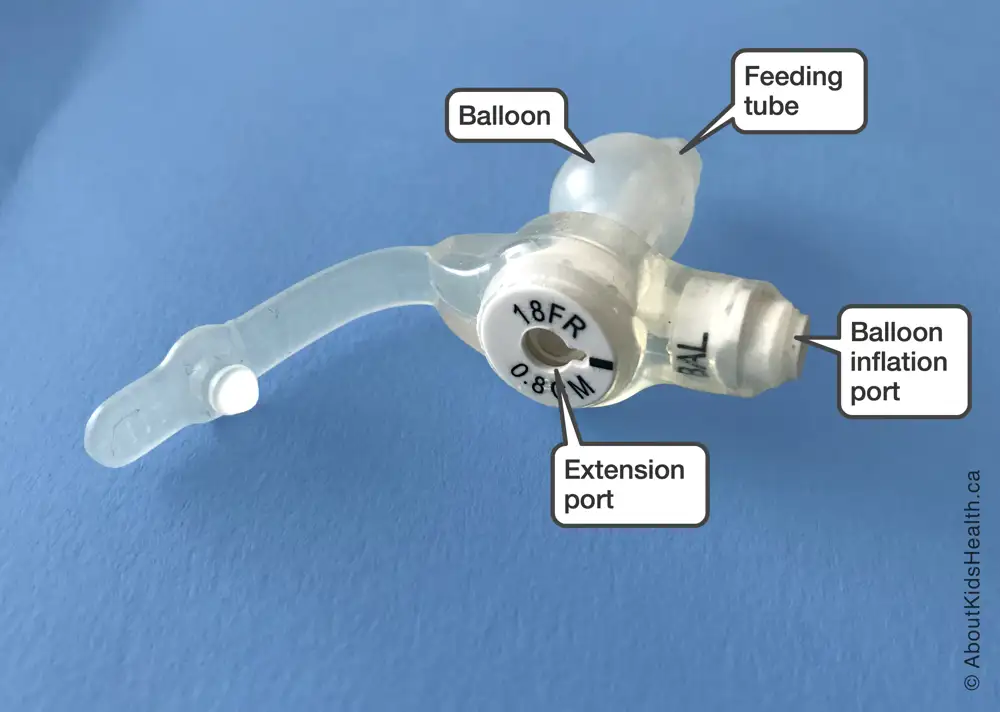
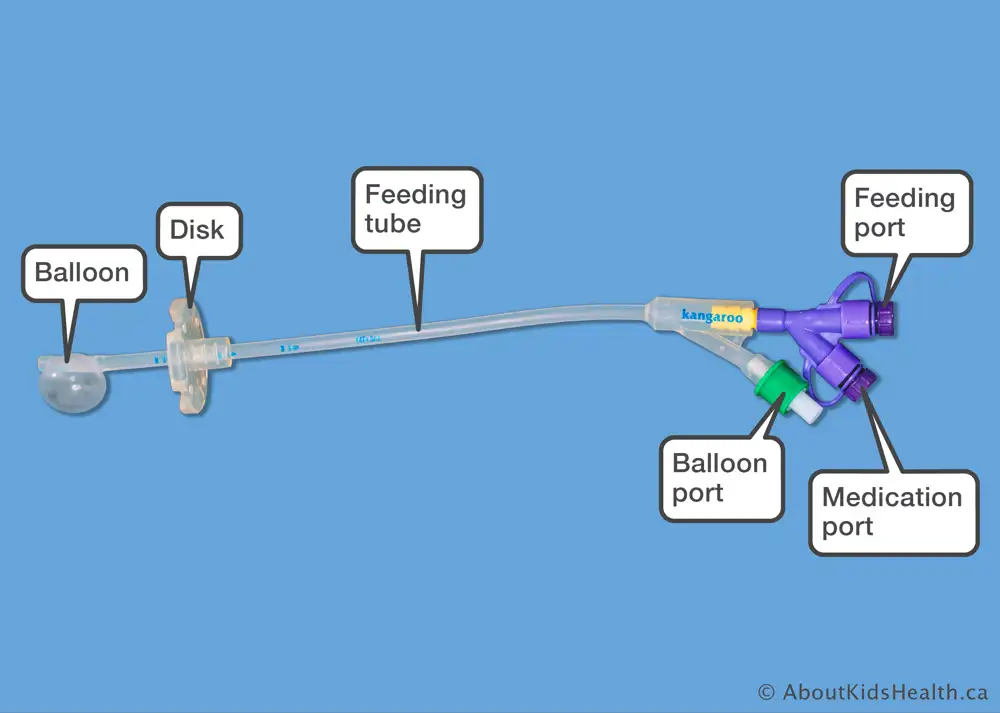
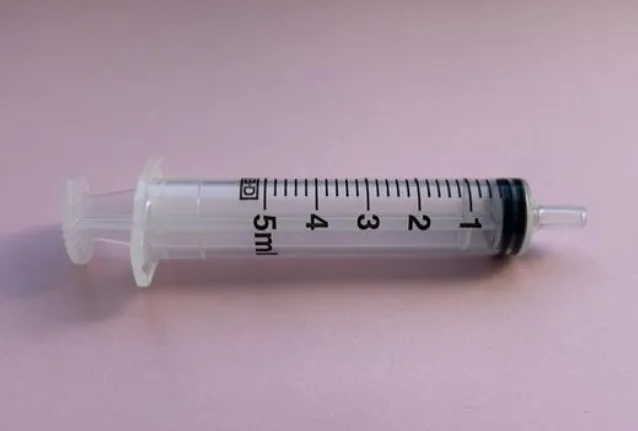
The amount of water inside the balloon impacts the fit of the feeding tube. Each type and size of balloon style feeding tube has a range of sterile or distilled water it can hold. Click here to learn more.
DID YOU KNOW?
Filling the balloon with more or less water can affect the fit of the tube to the skin.
- If the tube is so tight that there is an indent in the child’s skin, the amount of water in the balloon can be decreased.
- If the tube sticks out too much and is dangling from the stoma, the amount of water in the balloon can be increased.
- Adjusting the balloon volume may help with the fit of the child’s tube (see picture below).
- If the tube is leaking or loose, the tract may need to be re-measured by the g-tube specialist.
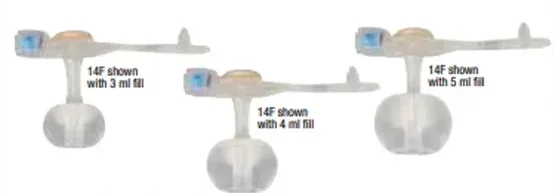
Before doing balloon checks it is important to know:
- Who placed the tube and when it was placed
- What type, brand & size of tube is in now place
The answers to the above questions will inform when to start checking balloon volumes. Consider the following:
- Many initial enteral feeding tubes placed by Image Guided Therapy (IGT) start out without balloons and are only changed to balloon style feeding tube after at least 3 months.
- Some initial feeding tubes placed by IGT do have a balloon, but the balloons on these tubes are NOT to be checked in the first 8 weeks following tube insertion. See Primary Avanos Mic-Key Balloon G-tube to learn more.
- Feeding tubes placed by General Surgery may have balloons, but the balloons on these tubes are NOT to be checked in the first 8 weeks following tube insertion. See Surgically inserted G tubes to learn more
RECOMMENDATION:
Connected Care recommends the following:
- Once you have confirmed the child has a balloon style feeding tube and it is safe to check the balloon, check the amount of water in the balloon at least once a week. Confirm the balloon volume in the child’s care plan and partner with family to determine when the balloon check is usually done.
- To check the balloon, use a slip-tip syringe:
- Insert an empty slip tip syringe into the balloon port, marked “BAL”.
- Remove all the water from the balloon. Assess what was removed. It is normal for the water to become discoloured (brown or yellow).
- Throw away the old water.
- Re-inflate the balloon with new sterile or distilled water. Never use saline or air to inflate the balloon.
- See troubleshooting tips below.
- To prevent the balloon from leaking or breaking which can cause it to accidentally fall out, it is recommended that balloon style feeding tubes be changed approximately every six months.
- Note that balloon style G-tubes can be changed at home if you or family knows how, while balloon style GJ or G/GJ tubes must be changed in hospital.
TROUBLE SHOOTING IF THERE IS LESS WATER THAN PUT INTO THE BALLOON
It is normal for less water to be removed from the balloon than what was originally put in due to evaporation. This difference can be up to 0.5mL over a period of a week.
If the difference between the water put into the balloon and the water removed is greater than 0.5mL, the balloon may be damaged or leaking. In this case, re-inflate the balloon with the amount of water normally used and check again in 3-4 hours:
- If the volume of water retrieved is the same as what you put in, the water may have simply evaporated quicker than usual. Re-inflate the balloon with the amount of water you normally put in and check the balloon volume every three to four days to be sure there are no further problems.
- If the volume of water retrieved is less the second time, the balloon is likely damaged, and the feeding tube will need to be replaced.
- If the volume retrieved is more than what you originally put in the balloon, and it looks like stomach contents or food, this means the balloon is broken and the feeding tube will need to be replaced.
IF THE BALLOON IS DAMAGED
If the balloon is damaged, the feeding tube is at risk of being accidentally pulled out and needs to be securely taped down (see picture below). There is usually no need to go to the emergency department and the child can be fed and given medications via the feeding tube until arrangements are made to change the tube.
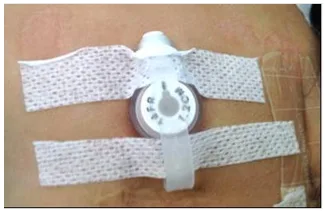
More Information
To learn more, visit the following AboutKidsHealth Articles:
G tubes: Balloon G tubes
G/GJ tubes: Checking the balloon on a feeding tube
VIDEO: How to change the water in the balloon of a low-profile feeding tube
G/GJ tubes: How to change the balloon G tube and check tube placement
For more information about the child’s specific tube type, balloon volumes, how to check the ballon or change the G-tube, contact the child’s G-tube Specialist (at SickKids, this is the G-Tube Team). After hours, weekends and holidays, you can also consider making a Connected Care Live consult to review your practice and get feedback on your skills.
